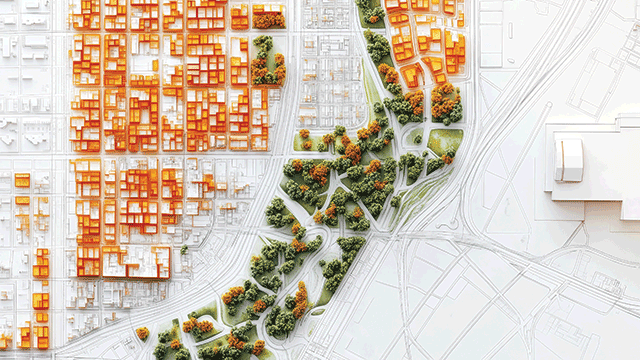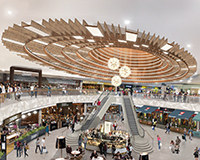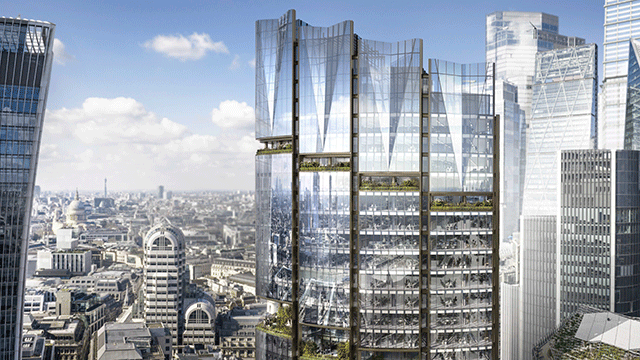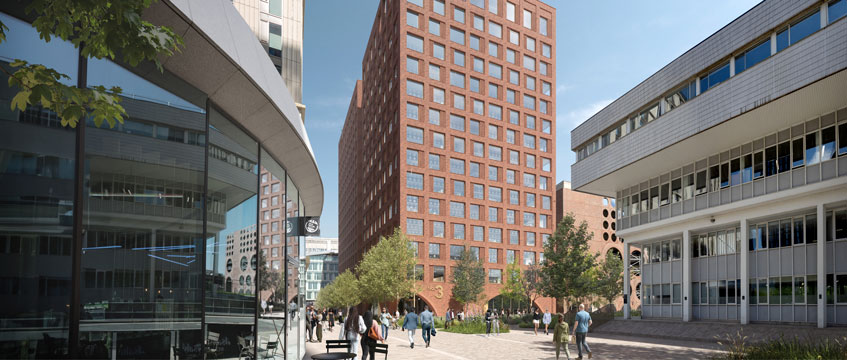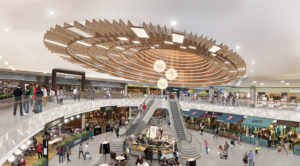
REVO 2016 ANALYSIS: Footfall is one thing; dwell time is another. A lot of people pass through Manchester’s Arndale centre, but now owners M&G Real Estate and intu are hoping that a reinvented and expanded food offer will not only attract more people but encourage them to stay longer.
The 1970s centre – redeveloped after the Manchester bombing in 1996 – had an old-style food court which is being redeveloped together with an additional 25,000 sq ft of former retail space to create Halle Place.
What Manchester’s Arndale did
-
£11m investment
-
Redevelop additional 25,000 sq ft former retail space to give an ‘relaxed adult pace’ dining experience
-
Experts suggest £50 per sq ft plus £10 per sq ft could be achieved
Rather than the traditional pit-stop food offer, the Arndale’s £11m dining hub is about breakfast, lunch and dinner, all taken at a relaxed adult pace, with proper plates at proper tables. The partnership is – in effect – creating its own in-house version of Aviva Investors’ nearby Corn Exchange dining centre.
The reinvention of the food court is necessary, according to JLL director of shopping centre leasing Steve Morgan: “It’s a massive investment and highly desirable because the Arndale has mostly had a grab-and-go food offer. This £11m investment provides a new food and beverage core to their prime retail offer, like the kind of thing Westfield have done with their malls. A shopping centre doesn’t want its customer to dine elsewhere, because if they walk out of the door, they’ve lost them.”
The project includes 15,000 sq ft of refurbished close-to-dining fashion floorspace – a smart move, says Stuart Moncur, head of national retail and occupier services at Cushman and Wakefield. His team advises on the Corn Exchange as well as intu’s Trafford Centre.
“The Arndale is getting stronger. A lot of fashion retailers want to be there rather than the surrounding streets – it is the spine of the city centre, linking all points on the compass. But they perhaps have a lot of transient footfall passing through,” he says.
M&G asset manager Kannika Mall, speaking for the joint owners, agrees. She says the new dining hub – they refuse to use the phrase “food court” – will do wonders for dwell time.
“This is about an all-day experience-led Arndale,” she says. “It will increase dwell time by several hours.”
“This is about an all-day experience-led Arndale. It will increase dwell time by several hours.” – Kannika Mall, M&G
The loss of retail floorspace is well worth the sacrifice, she insists. “We’re looking at consumer habits and creating something that diversifies and widens our demographics, bringing new shoppers into the scheme. I don’t think anyone else is doing a food and beverage development on this scale. It will encourage new retailers to come into the Arndale and drive rental growth.”
Intu and M&G prefer not to talk about quoting rents – too soon they say – but market experts suggest prices in the region of £50 per sq ft, plus a £10 per sq ft service charge, taking the entire occupational cost towards the higher end of local expectations.
Will it work? John Agnew, director at Savills, says: “This is an evolution of the food court, less a place to graze, more a destination – not fast food and Spudulike – and it’s clever, because it helps the landlords, encourages retailers, and it serves the interests of the big casual dining chains who see increasing footfall as a major driver to their business.”
The Halle Place scheme comes as Manchester’s retail and leisure offer faces a fork in the road, as well as plenty of forks on restaurant tables. In one direction lies a more metropolitan take on food and beverage – think London without the tourists – and in another, something more quirkily Mancunian of the kind the city’s Northern Quarter has pioneered.
The Northern Quarter has grown from a grungy Madchester playground in the late 1980s into a mainstream hangout. Once upon a time, a few hundred hardy souls haunted its coolest venues. Now it is said to be closer to 20,000 on a Saturday night. The effect is to drive the genuinely ice-cold cool folk elsewhere.
Simon Bedford, head of local government development advisory at Deloitte, declaims any kind of coolness. But he knows a trend when he sees one.
“The danger is that the real hipsters start to take the £44 bargain flights to Hamburg for the weekend. Some are already doing it rather than staying in Manchester. I’m too old to know what a new version of the Northern Quarter would look like, but I know the city council are looking for it, and haven’t found it yet.”
“The danger is that the real hipsters start to take the £44 bargain flights to Hamburg for the weekend.” – Simon Bedford, Deloitte
Savills’ Agnew thinks he has the answer. “Ancoats – that will be the new Northern Quarter, it will come next. We’re already starting to see developers preparing leisure schemes, and it has a growing residential population which can help support them,” he says.
In the meantime, there are some interesting Northern Quarter schemes that will help maintain the district’s momentum. With city council encouragement, Commercial Estates Group is mulling something big on a 70,000 sq ft High Street site, set to be a gateway to the district. A CEG statement says: “This is in the very early stages and there are no firm proposals at the moment.”
The other fork in the road is aggressively upmarket. Jackson Row Developers – the company backed by Manchester United old boys Ryan Giggs and Gary Neville – is planning 30,000 sq ft of high-end leisure space as part of its 700,000 sq ft St Michael’s scheme, Bootle Street. Ross Kirton, head of UK leisure agency at Colliers International, says the two skybars and five restaurants are already attracting interest. “This will be a mix of venues new to Manchester and homegrown ventures, and we’re targeting aspirational brands. We’ve had very strong interest.” Rents will be around £55 per sq ft – comparable to the Arndale, but way above the £30 per sq ft current in the Northern Quarter and £15 per sq ft (or less) in Ancoats.
Manchester is reaching for the next level – in food courts as much as in skybars.
Shopping centre checklist
View Shopping centre checklist in a full screen map
Other big regional schemes to look out for
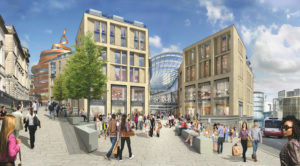
Rochdale, Greater Manchester Genr8 and Tokyo-based funding partner Kajima are about to submit a planning application for a 200,000 sq ft project. Work on site could begin in 2017.
Sheffield Queensbury Real Estate was selected in June as developer of the £480m Sheffield Quarter.
Nottingham Transformation of the intu Broadmarsh shopping centre, owned two thirds by intu and one third by the local authority, is part of a broader £150m investment.
Edinburgh TH Real Estate’s £850m regeneration of the St James shopping centre, Edinburgh, will be anchored by John Lewis, and is due to complete 2019/2020.

Coming soon
Hammerson’s John Lewis-anchored Victoria Gate, Leeds, opens on 20 October – one of a handful of shopping centre schemes launching this yearand next.
The scheme completes the 575,000 sq ft Victoria Estate, including the neighbouring Victoria Quarter.
Other new arrivals include Land Securities’ and The Crown Estate’s Westgate Oxford, which opens in autumn 2017, and Bond Street, Chelmsford, which is also anchored by John Lewis, which will open this autumn.
What’s their secret? According to Legal & General’s Simon Russian, head of development for the £240m Lexicon, Bracknell, it is the local council.
“A proactive local authority can make a big difference. It’s key that occupiers and investors know their chosen scheme is receiving investment in roads, education, healthcare, housing and other infrastructure projects,” he says.
The 1m sq ft scheme is due to open in late 2017. Deloitte’s Simon Bedford suggests the key to success may sometimes be the magnetic names of some tenants and developers. He says: “Funders and retailers now only want the very best opportunities, which means if you land a John Lewis prelet and have a grade-A shopping centre operator, all is well. The others look more marginal.”
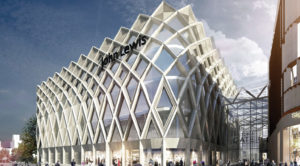
Now or never?
If it’s not under way, will it get built? The list of shelved, abandoned or never-started shopping centre schemes is getting longer by the day.
According to Colliers International, more than 10m sq ft of shopping centre developments planned for construction during the next five years are unlikely to be built.
Colliers’ head of UK retail, Mark Phillipson, says: “The biggest factor is the economy, which is just not strong enough, and developers are postponing plans until better times. Of course if schemes are under way – like Legal & General’s Bracknell town centre or Hammerson’s Victoria Gate in Leeds – then it’s a different story. But if you have just won planning permission, you’re going to be looking very carefully at your appraisals.
“On the face of it, the shopping centre development pipeline is now running at levels not seen since the recession, but the reality is that many schemes will not be viable. As the market stands, the cost of building a centre would – in many instances – be more than its end value.”
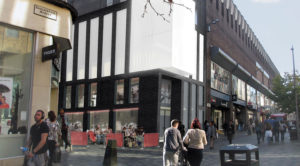
Glasgow: mixed fortunes
Land Securities’ £400m plans for an extension to the Buchanan Galleries is one of the schemes apparently making no progress.
The 1.2m sq ft project was to have seen the Galleries double in size, but it is a complicated rail-related site.
LandSec says it will continue to work on the plans: “Disappointingly, during the year we decided to put on hold our plans to extend Buchanan Galleries, Glasgow, because of a conflict between our development programme and rail improvement works at the adjacent Queen Street station. We are continuing to work on our plans to improve the retail, leisure and food offer at the centre, though these are unlikely to be at the scale previously envisaged.”
More modest schemes have made progress, despite obstacles. Kohlberg Kravis Roberts and Quadrant Estates’ redevelopment at Glasgow’s Sauchiehall Building has relaunched 280,000 sq ft of retail floorspace and provided two new corner units. The city council, unusually, agreed to allow food and beverage uses.
Quadrant associate partner Vanessa Buchan says: “Sauchiehall Street has been suffering badly from empty units, and the city has had a problem with food and beverage frontages, so we had a big discussion and said we can only invest in this site if we have a relaxation.”





